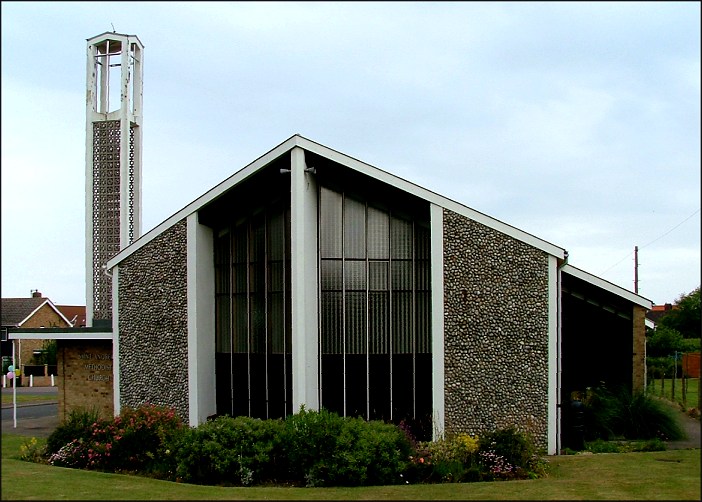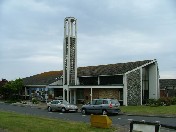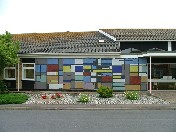| |
|
St
Andrew, Sheringham
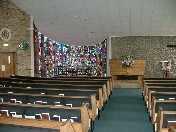 |
|
As
I have said elsewhere, I am very fond of
Sheringham. The town as it is today is a late
19th century development of the fishing village
that sat at the bottom of the hill from what is
now called Upper Sheringham. To look at
it on a map, it is easy to think of this as the
western outpost of a straggle of conurbation
drawing Sheringham, West Runton and Cromer all
together. In fact, they are quite distinct
places, each with its own character. Cromer is
jolly and brash, West Runton rather suburban but
with beautiful woods and a pretty coastline,
while Sheringham is perhaps the most characterful
place of all, with narrow lanes and little shops.
It is the end of the railway line from Norwich
now, although you can still take a steam train to
Holt in season.
|
Sheringham
is home to a very important early 20th century church,
Sir Giles Gilbert Scott's Catholic church of Our Lady and
St Joseph. It sits on the top road to Cromer, and almost
directly opposite is this fine, distinctive Methodist
church, dedicated to St Andrew. It was built in 1968 to
the design of Wally Thompson, a Methodist architect who
was also responsible for Trinity Methodist at Lowestoft
in Suffolk where he was a member of the congregation.
The main
feature, of course, is that great campanile tower,
familiar from other churches and schools of the period. I
assume that it was intended for a bell, although it now
appears to be empty. It doesn't detract from the fine,
bold south end of the buliding, which rises like the prow
of a boat, tall central lights flanked by walls of
shingle.
| The
main entrance is flanked by a vast, abstract
mural. Again, this is typical of the period, but
so many of these have now been whitewashed. How
good that this one remains to speak of the
confidence of the period. You step in to a
curving corridor which leads to meeting rooms,
and you cross into the body of the church itself. If the
exterior is bold and of its period, the interior
is even more successful. A bright, light
amphitheatre, slightly canted, faces towards a
shingle wall backing the business end, with a
gorgeous curved coloured window, again of
abstract design, enfolding the font and forming a
baptistery. Yellow brick walls flank the
auditorium, and a banner recalls that this
splendid building replaced two 19th century
Methodist chapels on Station Road and Beeston
Road.
|
|
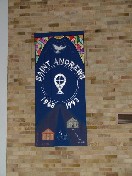 |
|
|
|

